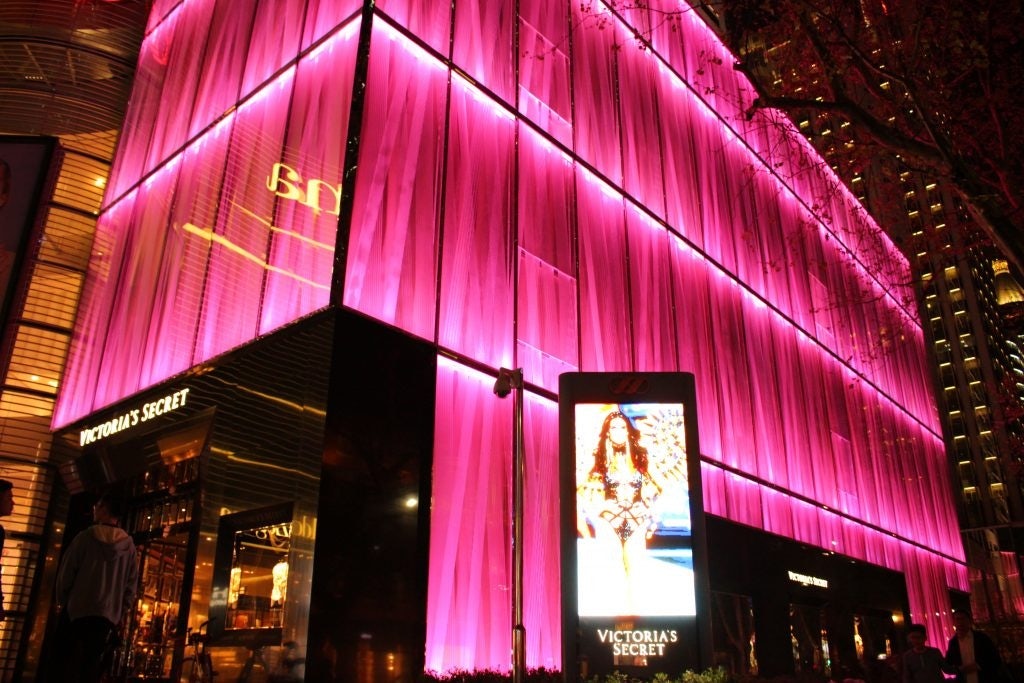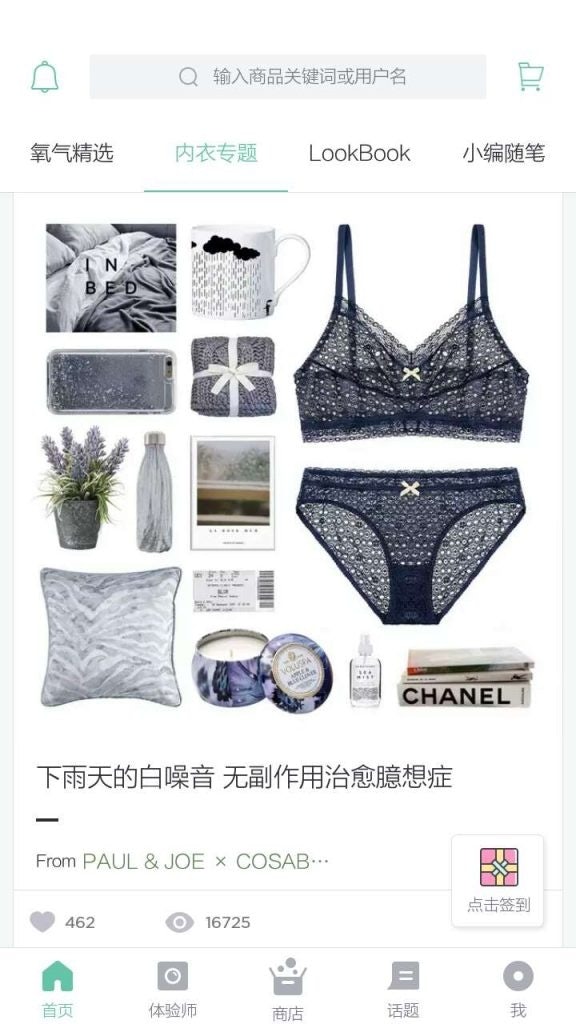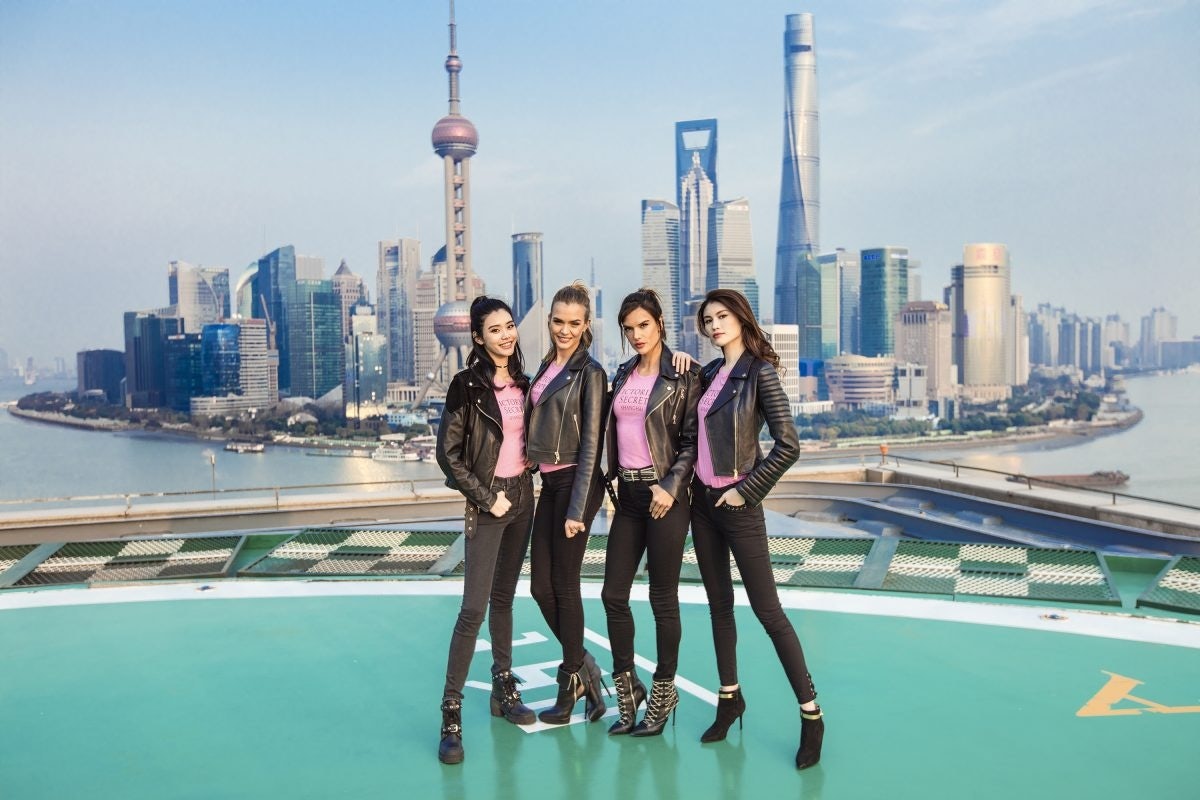Remember when Kendall Jenner's phoenix wings were mocked on the Chinese internet for being tacky? Just two months after that controversial Victoria's Secret Fashion Show, the brand opened its first fully-stocked store in Shanghai, and Chinese shoppers would likely find it to be considerably more refined—no dragon wraps here. Located on Shanghai's upscale Huaihai road with neighbors like Hermès and Shang Xia just across the street, it's clear that Victoria's Secret is striving to elevate itself from its mass-market appeal in the United States to having a more high-end, sophisticated image in China.

Inside the four-story store, most of the lingerie is priced between 300 RMB (US$43) and 500 RMB (US$73), which is higher than what it costs in the U.S. While its "Pink" and sport collections are available on the first two floors, shining spiral stairs lead customers to the third floor, which displays glamorous outfits worn by Angels in previous fashion shows and designer lingerie ranging from 1,500 RMB (US$218) to 4,000-plus RMB (US$581). The Angel Suite, one of only three in the world after London and New York, offers the ultimate luxury experience for VIP customers to try on the latest lingerie in an intimate and private setting.
While its offline performance report in China has yet to be released, Victoria’s Secret's Tmall sales provide hints as to how the brand has been faring so far. The top seller is a crochet lace wireless bralette, with little to no padding. This may come as somewhat of a surprise to U.S. shoppers—the bralette was released last year in an attempt by Victoria’s Secret to meet athleisure trends, but its “No padding is sexy now” marketing wasn't well-received in the United States because the brand has long been known there for its heavily padded bras.
But while American customers have a certain perception of the brand, Chinese customers without much previous knowledge are more open to its new ideas. More than 2,400 customers left positive reviews about the bralette, with some saying they have “never worn such a comfortable bra before” and are excited to “show it off as a pretty top or bikini in the summer.” However, a bralette at 188 RMB (US$27) is a relatively more affordable option online, and so far, designer lingerie at 1,000-plus RMB (US$145) has fewer than 10 sales on Tmall. It may suggest that the brand has more ground to cover when it comes to targeting big spenders, but getting the opportunity to try on the higher priced items in-store will likely be more appealing to the growing number of Chinese women looking to spend more on quality intimates.
Victoria's Secret may be having success with women in China eager to embrace new trends, but they're certainly not the first nor only players in the industry to have done so. Though China's female lingerie market is lucrative with a retail value of US$25 billion in 2017, it is highly fragmented with no major brands leading the way. Currently, a Guangdong-based mass market lingerie brand called Cosmo Lady has just a 4 percent market share.
Nevertheless, Victoria’s Secret's China representatives told Jing Daily in an email that they are “very positive about the potential of the China market. A few more stores are in the plan, including one in Beijing.”
Apart from the debut of its annual Victoria’s Secret Fashion Show in Shanghai this year, it is unclear what else the brand has planned to woo Chinese consumers. Meanwhile, other international brands vying for a share of the market have been ramping up their campaigns. Italian luxury lingerie maker La Perla, for example, appointed top model Liu Wen as its brand ambassador in 2013. Two years later, on the popular reality television show “We Are In Love,” Liu Wen went on a pool date wearing La Perla, and the brand was known overnight. (Liu Wen also walked in the Victoria's Secret Fashion Show in 2016.)

Niche brands are beginning to gain momentum in China, too, partly thanks to lingerie APP O2, which has revolutionized how Chinese millennials purchase lingerie online and interact with each other. O2 has overseas buyers who search for lesser-known labels and then curates recommendations for various moods and occasions. Browsing O2 is like flipping through a lifestyle magazine, and O2 has more than 10,000 lingerie "experiencers" who try out the latest lingerie and express their opinions with creative Instagram-like posts. Brands like Mimi Holliday from the UK have their own subscription pages that display products and reviews from experiencers. O2 disclosed in 2016 that it has over 2 million downloads. A typical user places three orders in half a year and an average order is 591 RMB (US$86).
Offline, Asia's most influential lingerie fair is currently taking place in Shenzhen, where more than 800 industry players are participating in design contests and workshops, and international exhibitors, such as leading South American lingerie brand Leonisa, are keen to test the waters in China.
Victoria's Secret no doubt drummed up attention for its brand online following the high-profile Paris fashion show, but it likely has a long road ahead as it faces both international rivals and local innovators.
